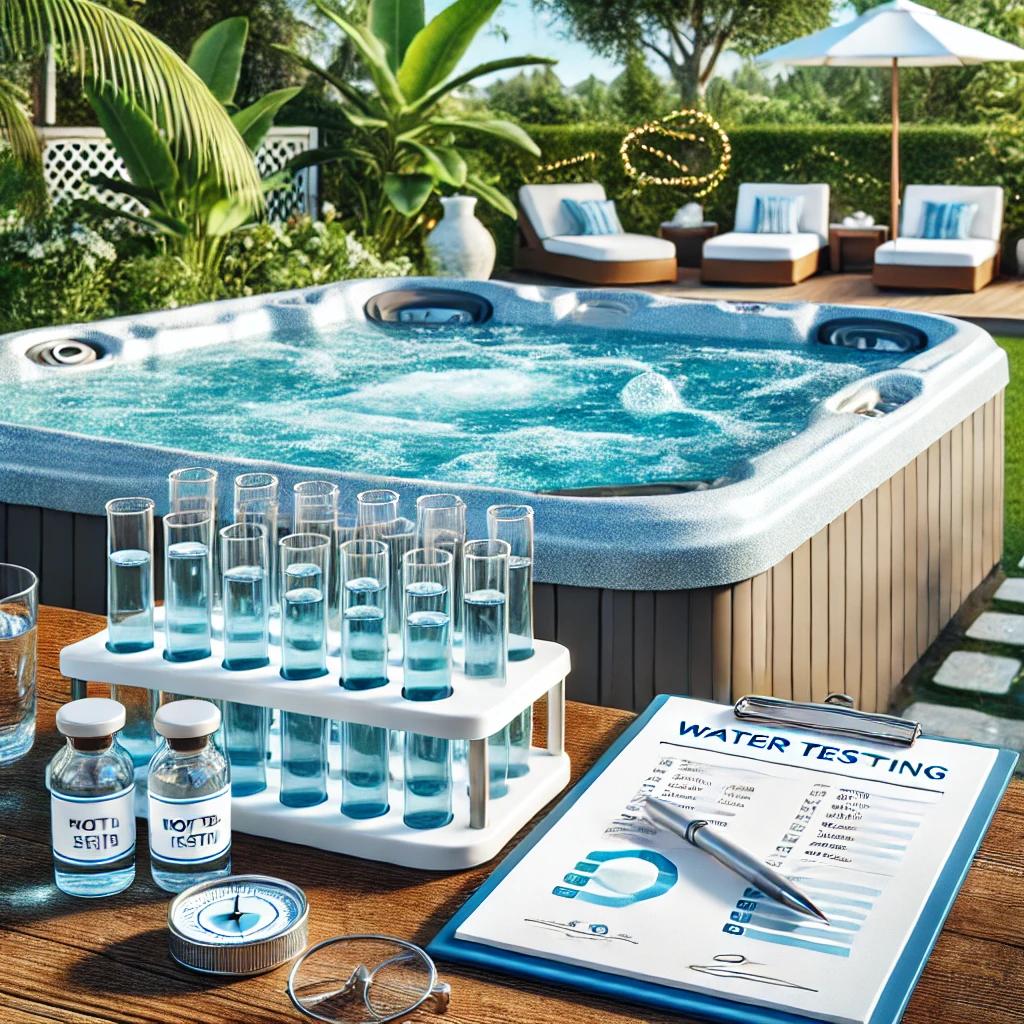Hottub, Swimming Pool
Understanding Spa Pool Design and Commissioning for Optimal Safety
Understanding Spa Pool Design and Commissioning for Optimal Safety
The design and commissioning of a spa pool are critical factors in ensuring its safety and preventing the growth of harmful bacteria. A well-designed spa pool not only provides a relaxing experience but also minimises the risk of microbial contamination. This blog post will explore the key aspects of spa pool design and commissioning, referencing the Health and Safety Executive (HSE) document HSG282 to help you understand how these elements impact the overall safety of your spa pool [1, 10].
Key Considerations in Spa Pool Design
The design of a spa pool should take several factors into account to ensure it operates safely [41]:
- Location: The location of the spa pool (indoors or outdoors) will affect the design requirements [41, 42]. Indoor spas will need dehumidification measures [10, 42].
- Bather Load: The anticipated number of users should influence the design features, with a higher bather load requiring more robust systems [41].
- Source Water Quality: The quality of the water supply should be considered to minimise potential contamination issues [41, 43].
- Drainage and Water Replacement: The design should ensure easy and complete drainage and water replacement [41].
- Accessibility for Cleaning: All parts of the spa should be easily accessible for cleaning, operation and maintenance [10, 41].
- Balance Tank: Deck-level overflow systems require a balance tank for water displacement [41, 44].
- Plant Location: The plant room should be close to the pool, with easy access for maintenance [45].
- Filtration: The filtration system should be appropriately sized for the pool, and designed to remove particulate matter efficiently [41, 46].
- Chemical Treatment: Automated chemical dosing and storage arrangements should be considered to ensure consistent and accurate treatment of the water [41, 47].
Key Features of Effective Spa Pool Design
A well-designed spa pool will also incorporate the following:
- Circulation System: The design should ensure effective circulation and mixing of the water, avoiding stagnant areas [46, 48]. Surface draw-off should be approximately 80% of the circulation volume [46].
- Pipework: Pipework should be easily accessible and have minimal length to avoid deadlegs and microbial growth [45, 49]. Flexible corrugated pipework should be avoided [49].
- Filtration System: The correct filter type should be chosen for the anticipated use, and ensure backwashing or cleaning can be done efficiently [48, 50].
- Water Treatment: An automated system is preferred, with chemical dosing systems designed to shut off if circulation fails [47, 51].
- Booster Jets: Jets should be designed to reduce biofilm formation and facilitate cleaning and treatment [52].
- Air Blower System: Air blower systems should be demountable and accessible for disinfection [20].
- Water Make-up Supply: The supply must meet the Water Supply regulations and allow for rapid filling after cleaning [53, 54].
Commissioning Process
The commissioning process is essential for ensuring that the spa pool operates safely from the outset. This should be carried out by competent professionals in a logical and defined manner and in full compliance with the supplier’s or installer’s instructions [51, 54]. Key steps include:
- Initial Disinfection: Water should be disinfected with 50mg/l of chlorine for at least one hour, keeping the pH as near to 7.0 as possible [15].
- Safety Standards Check: Confirm that all safety standards have been met. This includes electrical safety and prevention of entrapment.
- Functional Water Test: Conduct a comprehensive functional water test to ensure the system operates correctly [15].
- Water Analysis: Undertake chemical and bacteriological analysis to ensure that water quality parameters are achievable and maintained [52].
Key Takeaway
Proper design and thorough commissioning are crucial for ensuring the safety and longevity of your spa pool. By addressing these aspects carefully, you can minimise the risk of bacterial growth and create a safer, more enjoyable experience. Always consult a professional for advice and help when constructing or modifying your spa.
Keywords: Spa Design, Hot Tub Commissioning, Pool Construction, Legionella Control, Water Safety, Spa Safety
FAQs
- What is the importance of proper spa pool design?
- Proper spa design ensures safe operation, minimizes the risk of contamination, and facilitates easy maintenance [10, 55].
- What does spa pool commissioning involve?
- Commissioning involves thorough testing and disinfection of the spa pool before it is put into use. This includes a functional test, water analysis and verifying safety standards have been met [15, 51].
- Why is a balance tank needed in some spa pools?
- Balance tanks are used in deck-level overflow systems to manage water displacement caused by bathers and to maintain a constant level [44].
- What is a ‘deadleg’ and why should it be avoided?
- A deadleg is a length of pipework where water can stagnate. They should be avoided as they promote microbial growth [49, 56].
- Who should carry out spa pool commissioning?
- Commissioning should be carried out by competent people in compliance with the manufacturers instructions [51].










